COMSOL has the best multiphysical simulation capabilities in my experience. Technical support from Elisa at TECHNIC as well as the engineers at COMSOL has been great.
COMSOL is an important part of our research in plasma physics. We use it in the design of plasma systems and it helps us to obtain a greater understanding of the underlying physics. We have always valued the quick support from TECHNIC and COMSOL and it has been a pleasure to work with them.
Comsol has become a valuable part of our design and decision making process. The exceptional flexibility and access to the physics and solvers in Comsol has allowed us to have deeper understanding on thermomechanical solutions. Technic and Comsol have always been quick and helpful to resolve any issues and provide helpful advice on their products.
At Scion we use COMSOL Multiphysics to understand energy processes, such as the interplay of non-linear solid mechanics and heat & mass transfer during biomass compaction, to design new or more efficient processes.
We use COMSOL Multiphysics to design the customised muffler. With it, we can simulate the insertion loss at different spectrum with different muffler designs.
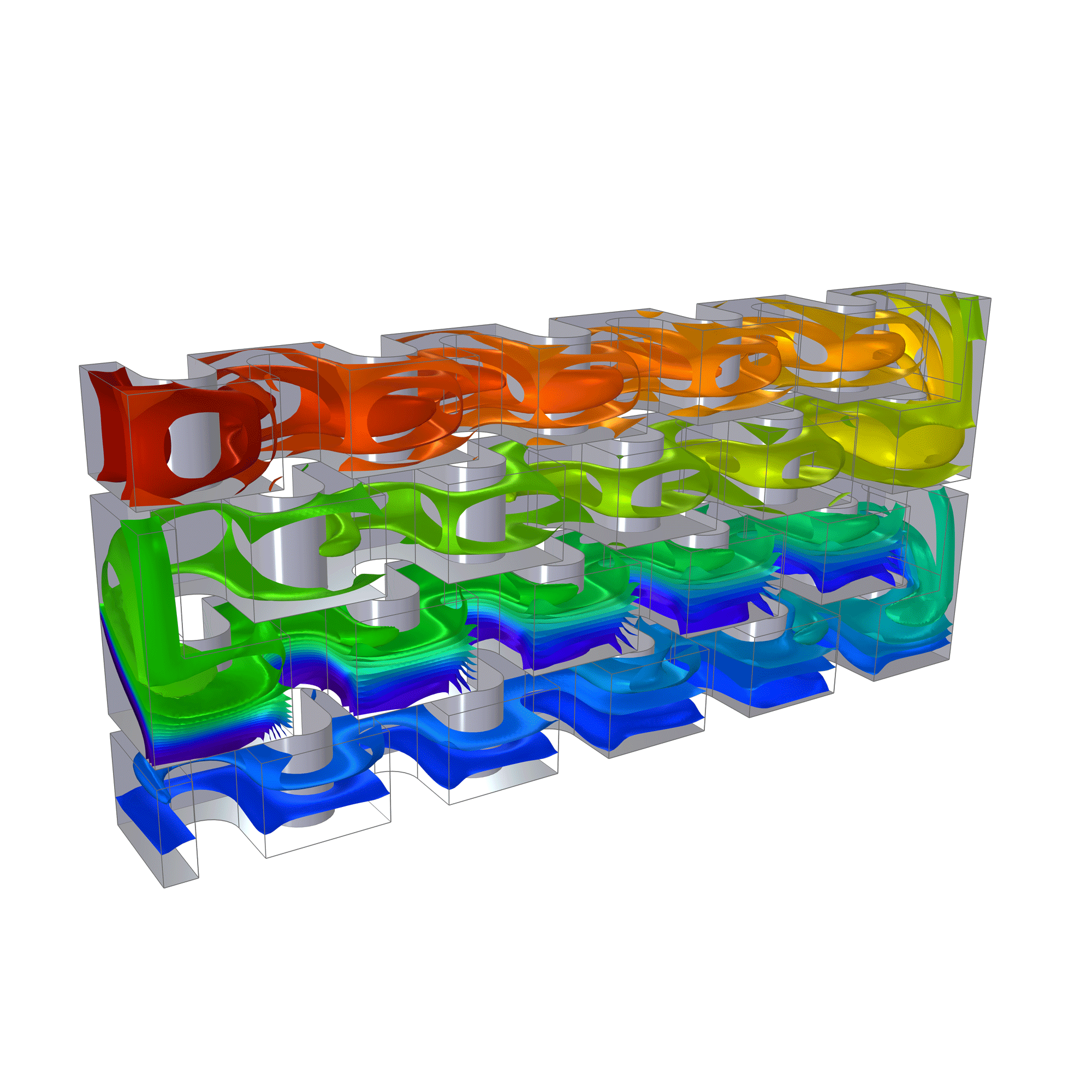
When you expand the COMSOL Multiphysics® platform with the Chemical Reaction Engineering Module, you have access to features for modelling transport phenomena and chemical reactions in addition to the core functionality of the COMSOL® software.
Realistic descriptions of reacting systems in scientific and engineering studies often need to incorporate both transport phenomena and chemical reactions to understand and optimise a process or design. The Chemical Reaction Engineering Module is tailored for the typical workflow in chemistry and chemical engineering investigations, which involve the following incremental steps:
The workflow described above can be applied in many different fields that involve chemical reactions and in all scales, from nanotechnology and microreactors to environmental studies and geochemistry.
The module allows engineers, scientists, and designers to quickly and efficiently define models, solve the model equations, perform parameter analysis, and evaluate the results from simulation studies. In addition, the whole process, from model definition to the presentation of the results, is documented in the software for transparency and reproducibility.
The first step in performing simulations of chemical reaction engineering processes is to study the reaction mechanisms in perfectly mixed systems. The Reaction Engineering interface is the main tool for studying these systems before moving onto transport phenomena.
The Chemical Reaction Engineering Module also contains a thermodynamic properties database, which you can use to calculate properties for gas mixtures, liquid mixtures, gas-liquid systems at equilibrium (flash calculations), liquid-liquid systems, and gas-liquid-liquid systems at equilibrium. There is a variety of thermodynamic models that can be used to calculate density, heat capacity, enthalpy of formation, enthalpy of reaction, viscosity, thermal conductivity, binary diffusivity, activity, and fugacity.
The following thermodynamic models are available:
The thermodynamic properties database can be used to create a so-called property package for a specific reacting system by selecting the chemical species present in the system, the desired properties, and the thermodynamic model. This property package defines functions and equations for use in the model of the reacting system. Note that a property package defines functions that can be used for perfectly mixed and space-dependent systems. The Reaction Engineering and Chemistry interfaces allow for the automatic linking of functions and equations to the models for perfectly mixed systems and space-dependent systems, respectively.
When a Reaction Engineering or Chemistry interface is defined with reaction mechanisms and a set of reactants and products, these reactants and products can be matched with the chemical species in the property package defined by the thermodynamic properties database. This matching automatically links the functions and equations generated by the property package to the model of the reacting system.
For perfectly mixed systems, the combination of the Reaction Engineering interface and the property package allows you to define and solve the fully coupled equations that describe the material and energy balances. The results are the temperature and composition of the reacting system with time, with a given set of initial conditions and operating conditions.
The thermodynamic properties database can also be used to compute heat capacity, density, thermal conductivity, and viscosity for fluids in systems that do not involve chemical reactions. The properties of the mixture are highly dependent on temperature and composition. Note that all of the functionality described here makes up the Liquid & Gas Properties Module, which is included in the Chemical Reaction Engineering Module.
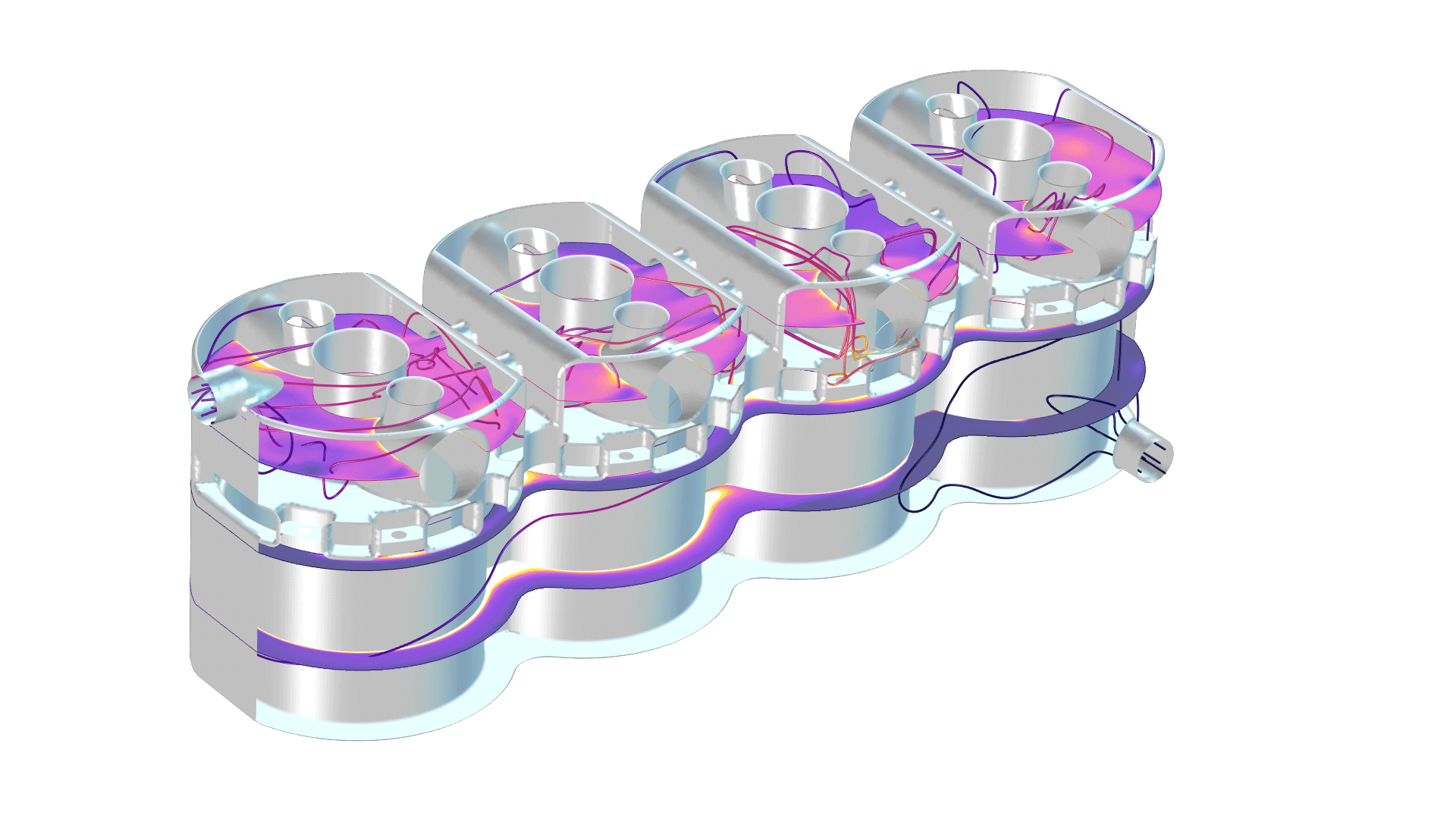
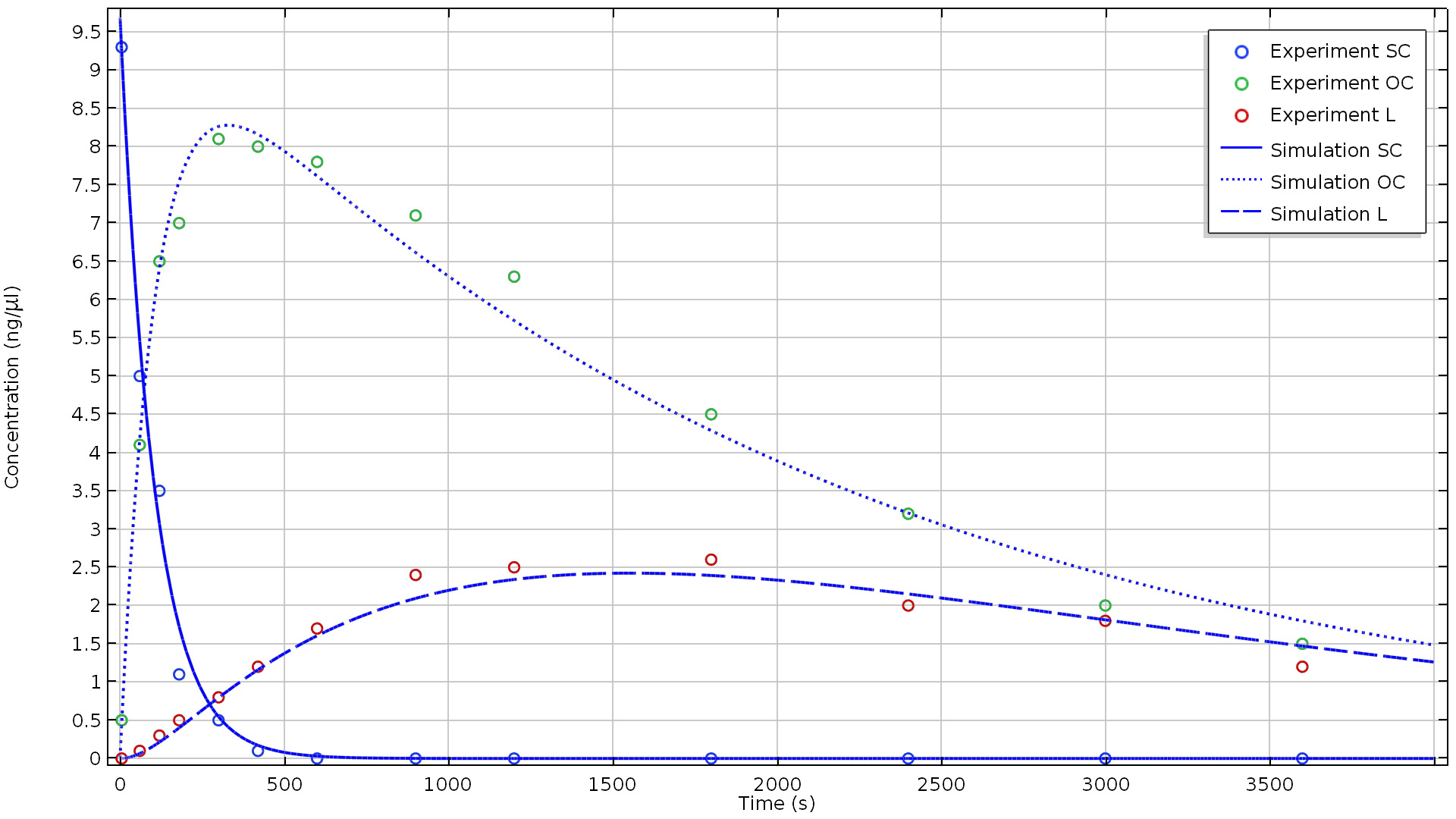
Once you have a working model for a perfectly mixed system, you can use this model to automatically define material, energy, and momentum balances for space-dependent systems directly from the Reaction Engineering interface. This functionality allows you to define problems in 2D, 2D axisymmetry, and 3D for multicomponent transport, heat transfer, and fluid flow. The transport properties calculated in the Reaction Engineering interface (for example, heat capacity, thermal conductivity, viscosity, and binary diffusivity) are then automatically made available in the space-dependent transport interfaces.
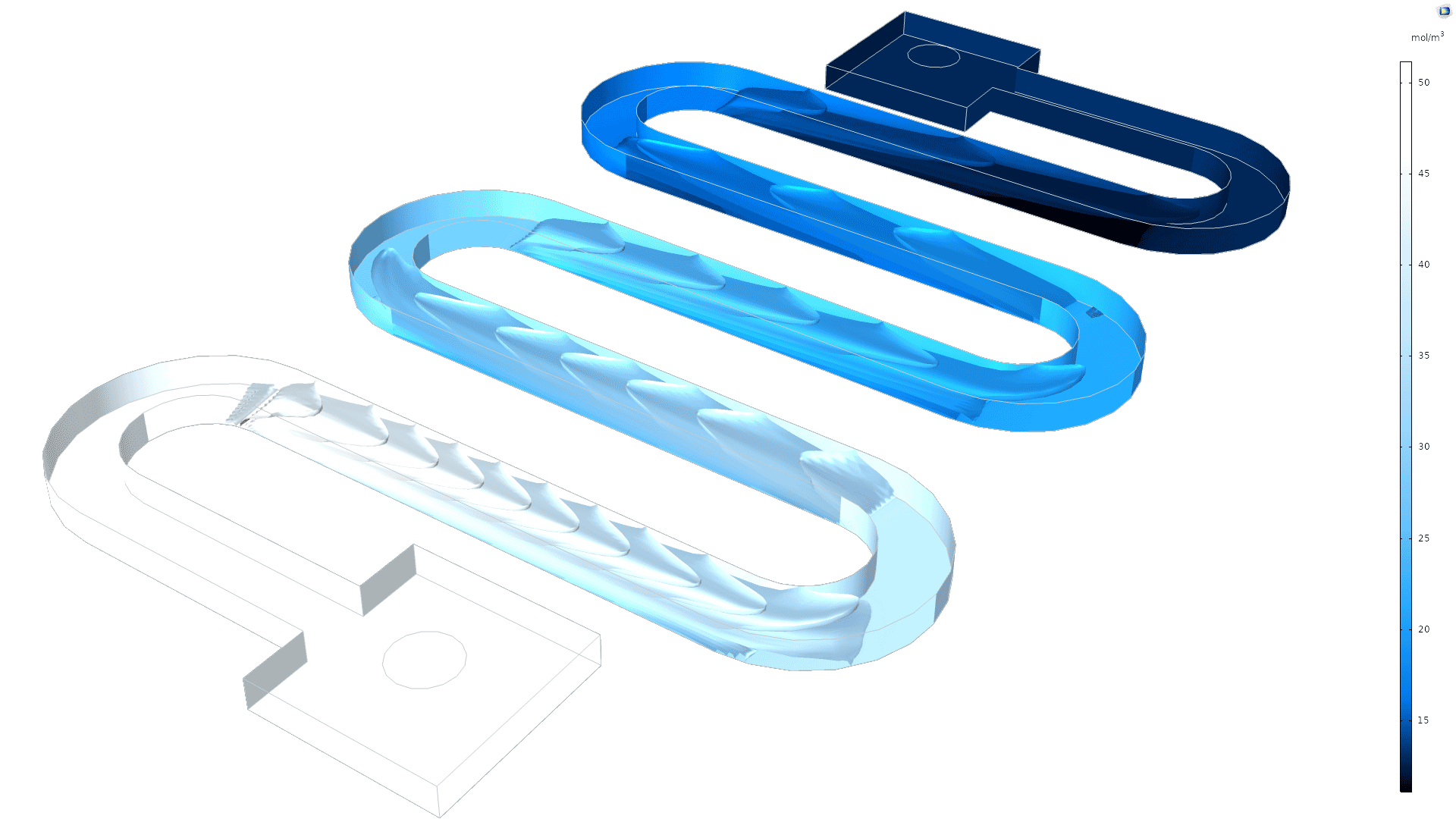
The structure and nomenclature for the formulations used in the module for the material, energy, and momentum balances, coupled to the reaction kinetics, is taken from the textbook Transport Phenomena by Bird, Stewart, and Lightfoot. This makes the user interface familiar to chemical engineers in both industry and academic institutions.
Modelling of transport phenomena in reacting systems involves the description of the chemical species in so-called multicomponent transport models. The Chemical Reaction Engineering Module contains sophisticated models for multicomponent transport in the Transport of Concentrated Species interface, where you can select between the Maxwell–Stefan formulation and the mixture-averaged models for multicomponent transport. For diluted solutions, you can also choose the Transport of Diluted Species interface, which treats cases where the interactions in the solution are dominated by solute-solvent interactions.
Both the Transport of Concentrated Species and Transport of Diluted Species interfaces can include electric fields as driving forces for transport for the modelling of electrolytes and ions. The Nernst-Planck and Electrophoretic Transport interfaces are dedicated to the modelling of electrolytes and can include the formulations of Poisson’s equation or the electroneutrality condition for the charge balance in the electrolyte. Applications of this functionality include electrokinetic valves, electroosmotic flow, and electrophoresis.
The chemical species transport equations are also available for porous media, for example, to include Knudsen diffusion. The dusty gas diffusion model is also included in the software. The formulation of the mass balance model as well as the transport properties can be obtained directly from chemical equations using the Generate Space-Dependent Model functionality in the Reaction Engineering interface.
The fluid flow interfaces in the Chemical Reaction Engineering Module can handle laminar and porous media flow. In addition, the module has ready-made couplings for the modelling of chemical species transfer in turbulent flow, when combined with the CFD Module. The formulation of the fluid flow model as well as the viscosity and density can be obtained directly from chemical equations using the Generate Space-Dependent Model functionality in the Reaction Engineering interface.
The heat transfer interfaces included in the Chemical Reaction Engineering Module can account for heat transfer by conduction, convection, and radiation. The radiation term is given by surface-to-ambient radiation, while the Heat Transfer Module is required for surface-to-surface radiation and radiation in participating media. The heat transfer capabilities in the Chemical Reaction Engineering Module include heat transfer in fluids, solids, and porous media. The formulation of the heat transfer model as well as the thermodynamic and transport properties can be obtained directly from chemical equations using the Generate Space-Dependent Model functionality in the Reaction Engineering interface.
Surface reactions are typical for heterogeneous catalysis as well as for surface deposition processes such as chemical vapour deposition. They are found in the bulk chemical industry, for example, in the Haber–Bosch process for the production of ammonia and in microsensors for the detection of very low amounts of tracers that can adsorb on surfaces and be detected by, for example, a change in electrical properties.
In transport-reaction models, surface reactions can be treated in two different ways:
The Reaction Engineering and Chemical interfaces can also deal with surface species and surface reactions in space-independent models for mechanistic studies and automatically export the kinetics to boundary expressions, as in the first option above, or as homogenised reactions in porous media, as in the second option above.
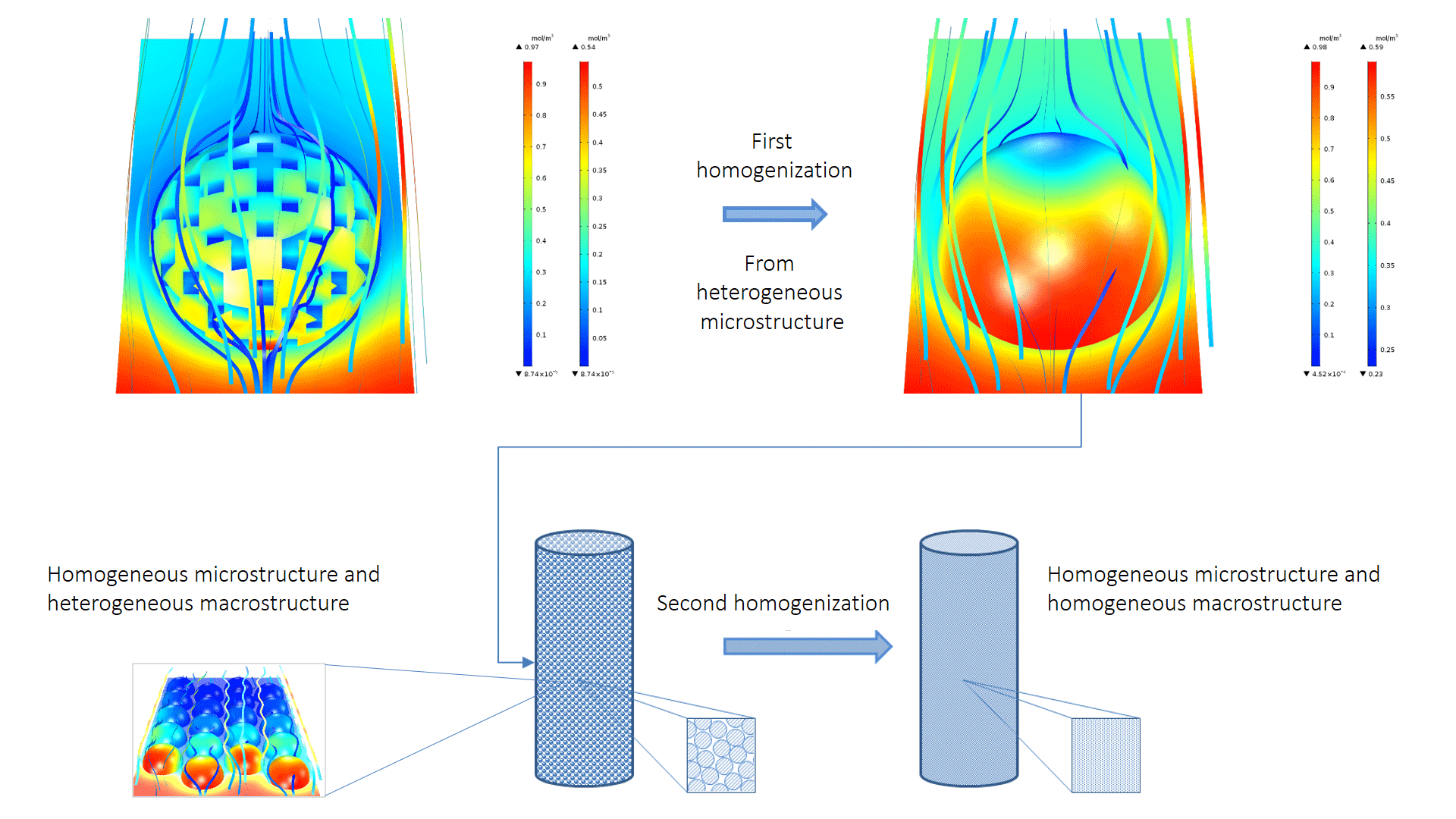
You can build user interfaces on top of any existing model using the Application Builder, included in COMSOL Multiphysics®. This tool enables you to create applications for very specific purposes with well-defined inputs and outputs. Applications can be used for many different purposes:
Once you have built an application in COMSOL Multiphysics®, you can make it available to your colleagues and customers with either the COMSOL Compiler™ or COMSOL Server™ products.
In order to fully evaluate whether or not the COMSOL Multiphysics® software will meet your requirements, you need to contact us. By talking to one of our sales representatives, you will get personalised recommendations and fully documented examples to help you get the most out of your evaluation and guide you to choose the best license option to suit your needs.
Fill in your contact details and any specific comments or questions, and submit. You will receive a response from a sales representative within one business day.